Madurai

This part of our tour of Southern India took us farther east to Madurai, a city in the Tamil Nadu state with a population of more than 1.5 million people. Our tour leader was not feeling well so had to stay back in Thekkady. We had a wonderful local city guide named Charlie show us around Madurai while a new tour leader traveled to Madurai from Kochi to meet us and complete the remainder of the tour with us. We went on a walking tour of the city where we enjoyed some local coffee and tea, went through the fascinating Sri Meenakshi Temple, and stopped in a shop where they gave us a presentation (aka sales pitch) about their handmade carpets, which were beautiful but quite expensive. Sri Meenakshi Temple is a popular Hindu pilgrimage site with its towers that are covered in intricate and colorful sculpture carvings. Photography is only allowed outside the temple but we were able to explore inside.

On our second day in the city we went to the Gandhi Museum via a tuk tuk, which we called through the Uber app. Who knew you could call and pay for a tuk tuk through the Uber app – so convenient and eliminates any troubles with language barriers or miscommunication. The museum outlined India’s history leading up to independence as well as Gandhi’s life, activism, and death. Madurai’s streets were a soggy mess that day and after the museum we gave up on exploring on foot due to encountering so many flooded streets. We departed Madurai in the early evening with our new guide to travel to Mysore via the overnight train.
Mysore
We arrived in Mysore, also known as Mysuru, in the morning and after checking into the hotel our guide took us to a local restaurant known for their dosas. We had a masala dosa made without butter which is usually added on top and an order of idli, fluffy little rice cakes served with coconut chutney and sambar. We were taken to shop and shown how incense is made and were also able to smell samples of some of the essential oils that Mysore is known for producing. Mysore is also a popular place for women to purchase beautiful saris and the outfits in the shop windows around town were colorful and gorgeous. Most women in India wear impressively attractive clothing. Even the lady we saw sitting on the side of the road selling coconuts from a wagon was dressed in a beautiful green and gold sari.
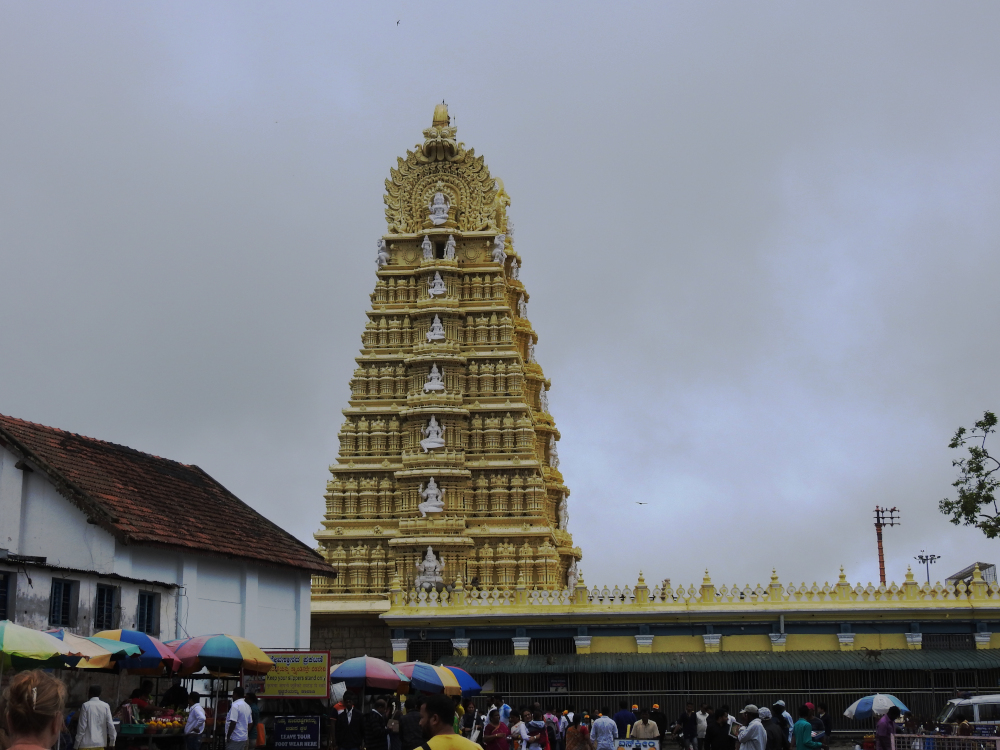
We visited the Shri Chamundi Temple, which was absolutely packed with people there to worship and give offerings to Goddess Chamundeshwari, also known as Goddess Durga (don’t ask me why there are so many different names for the same things in India). Coconuts, fruits, and rice were being offered to the goddess by Hindu devotees. To leave the temple we descended 1,008 steps and enjoyed views of the city skyline along the way. We also passed a large concrete statue of the bull Nandi, who is the legendary vehicle of the Lord Shiva in Hinduism.
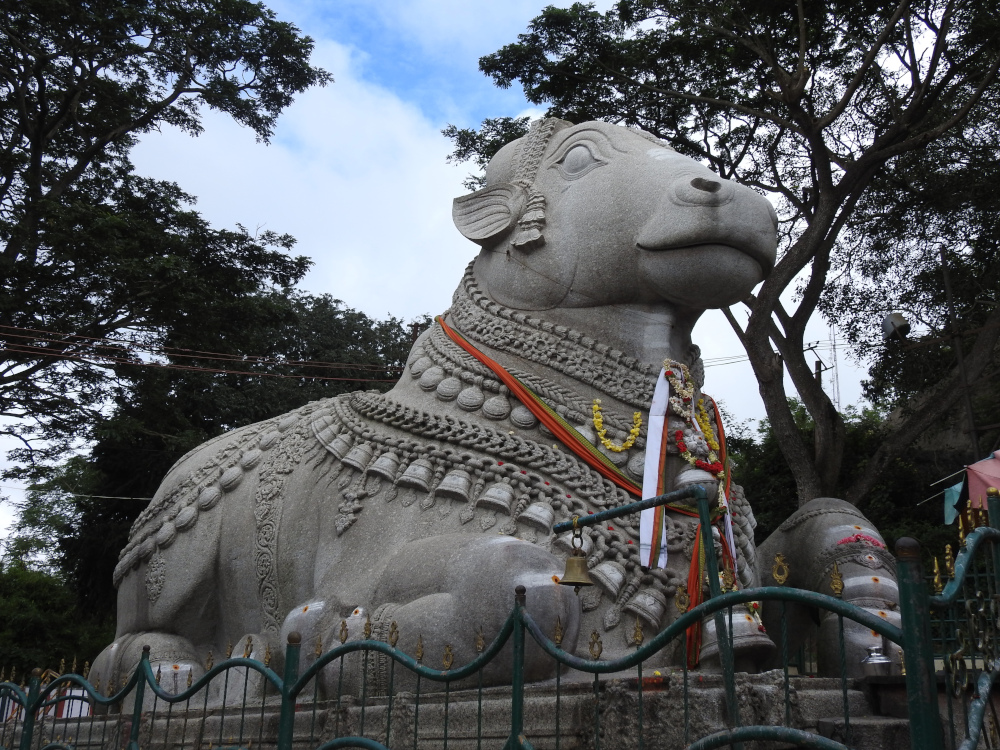
We went to the Mysore Palace, which is a historical palace and privately owned royal residence that is open to the public everyday. It is a famous and popular attraction with Indians.
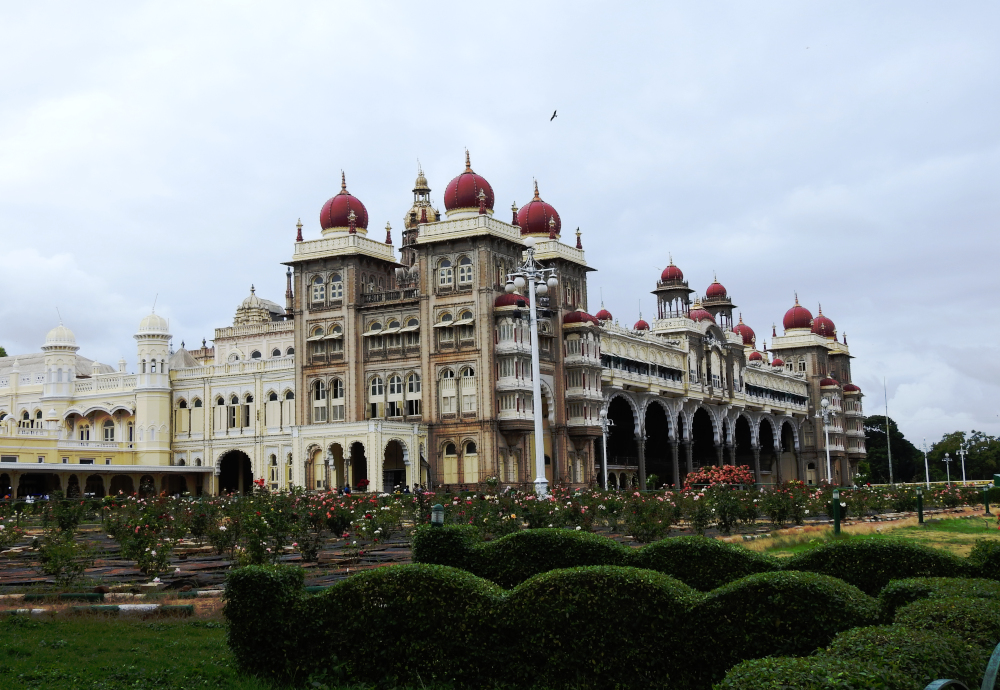
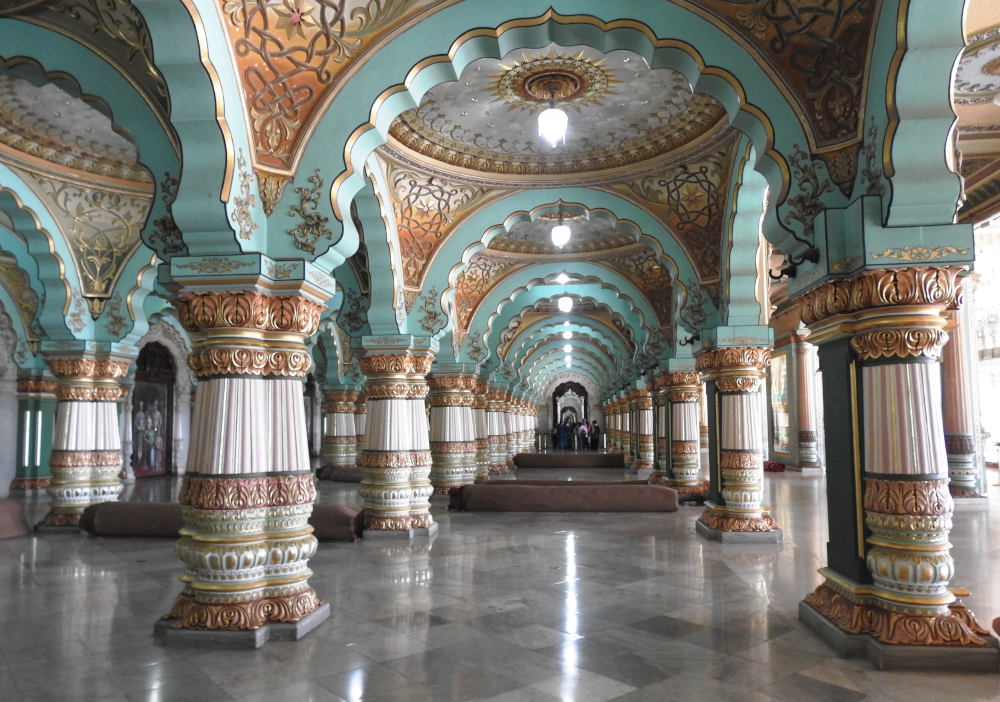
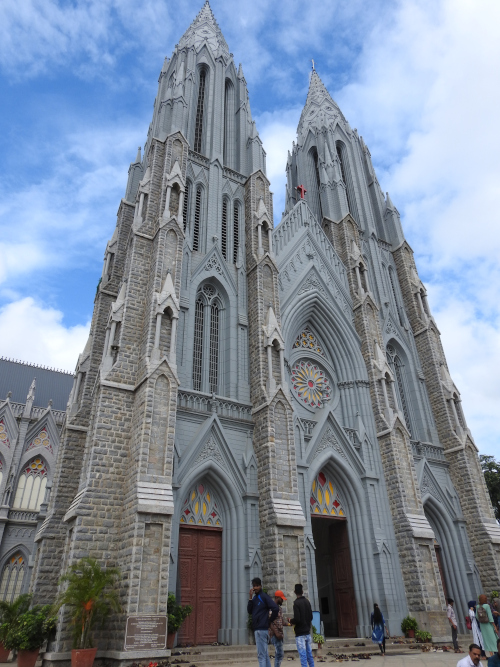
We walked by the outside of St. Philomena’s Cathedral, a Catholic church that was built in 1936 and is the cathedral of the Diocese of Mysore. We also spent a good bit of time wandering around the Devaraja Market checking out the many different vendors of traditional items such as flowers, fruits, vegetables, incense, bangles, and spices. Banana leaves were being sold by the bundle beside stacks of betel nut leaves. The market is a fun place for photography with all the vibrant colors.
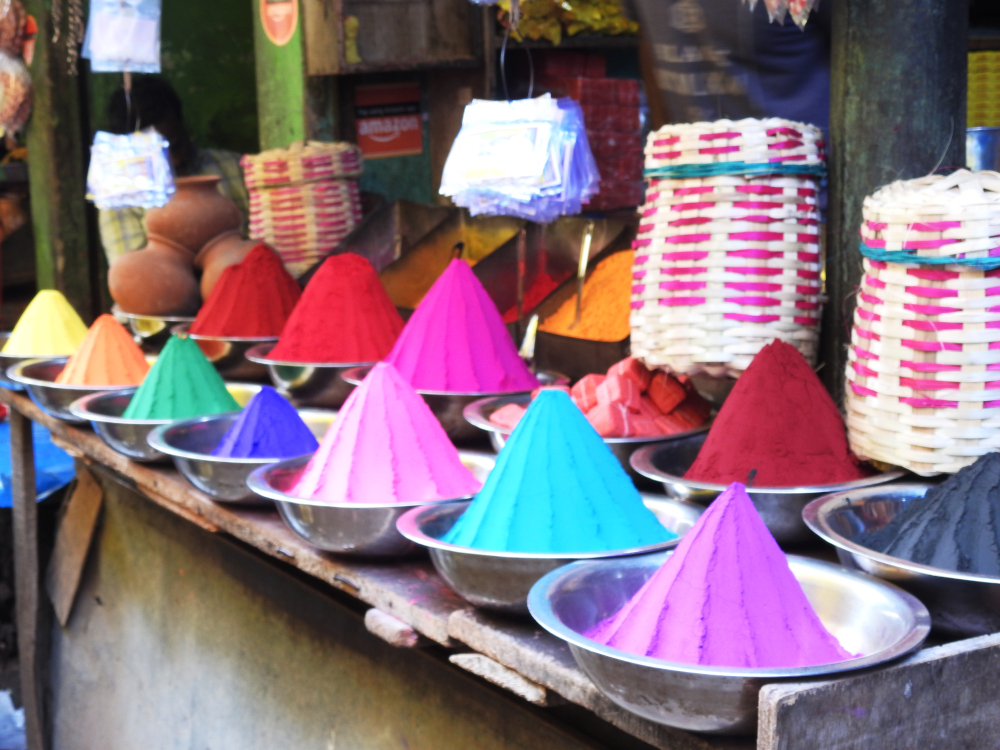
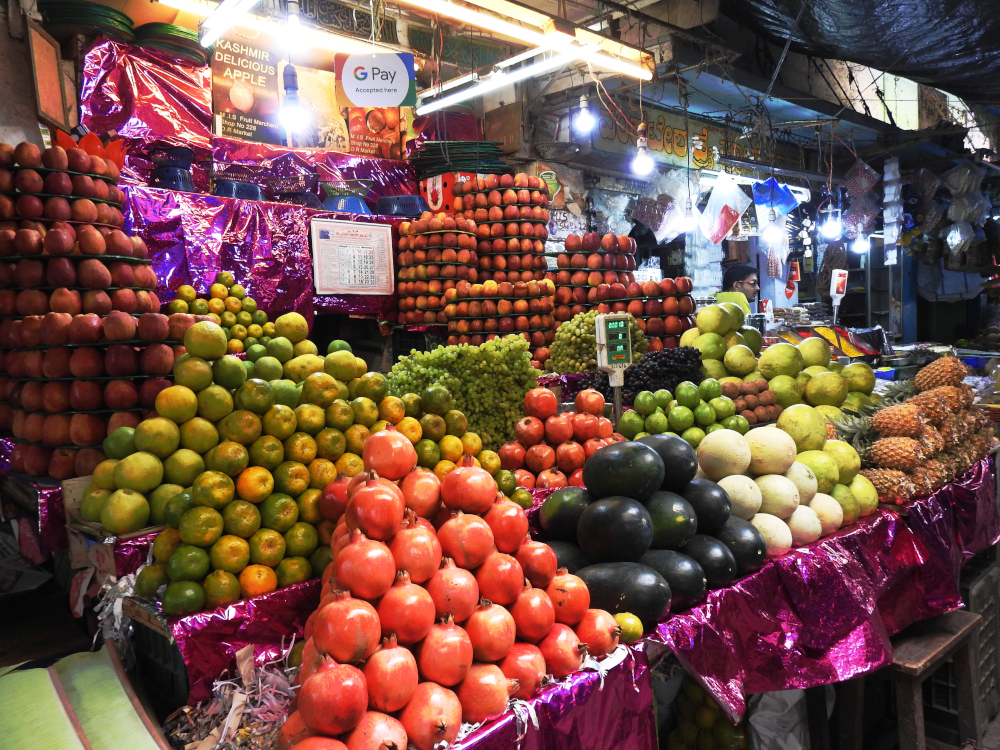
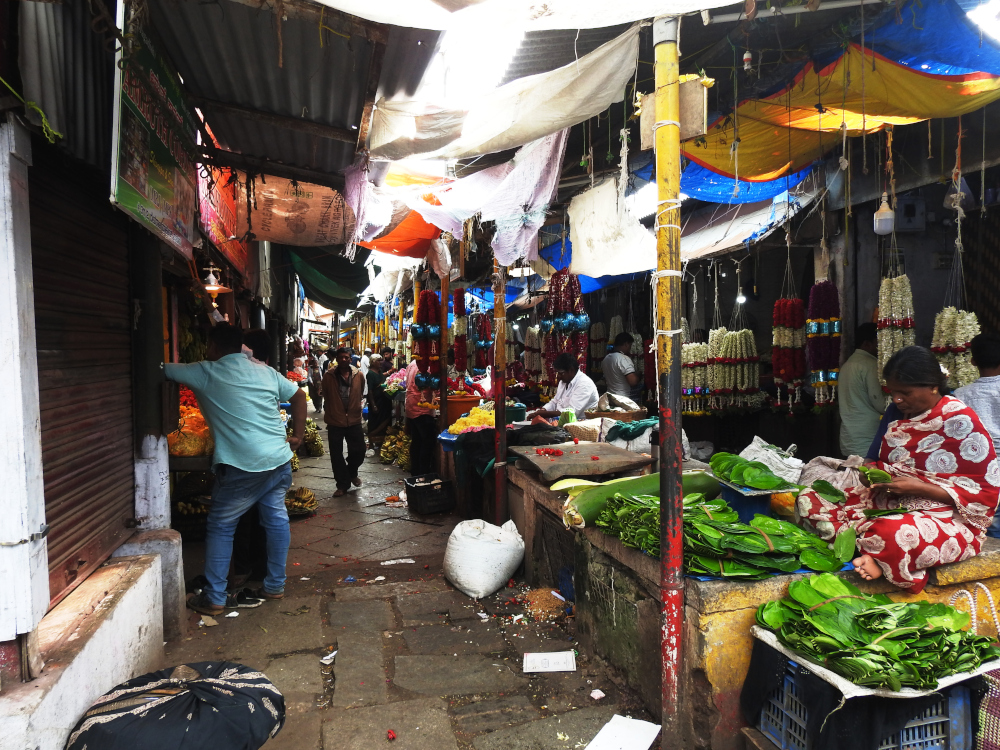

Hampi
From Mysore we took another overnight train to reach Hampi, a UNESCO World Heritage Site that is home to ruins from a grand city built by the Vijayanagara Empire in the 14th century. It is thought to have been India’s richest city at its height. The ruins in Hampi are spread out over a large area of sixteen square miles. We went on a morning tour of the entire area via tuk tuk. Our small group had the entire site to ourselves in several places, which was a treat. The Vitthala Temple in Hampi has a Garuda shrine in the form of a stone chariot in the courtyard.
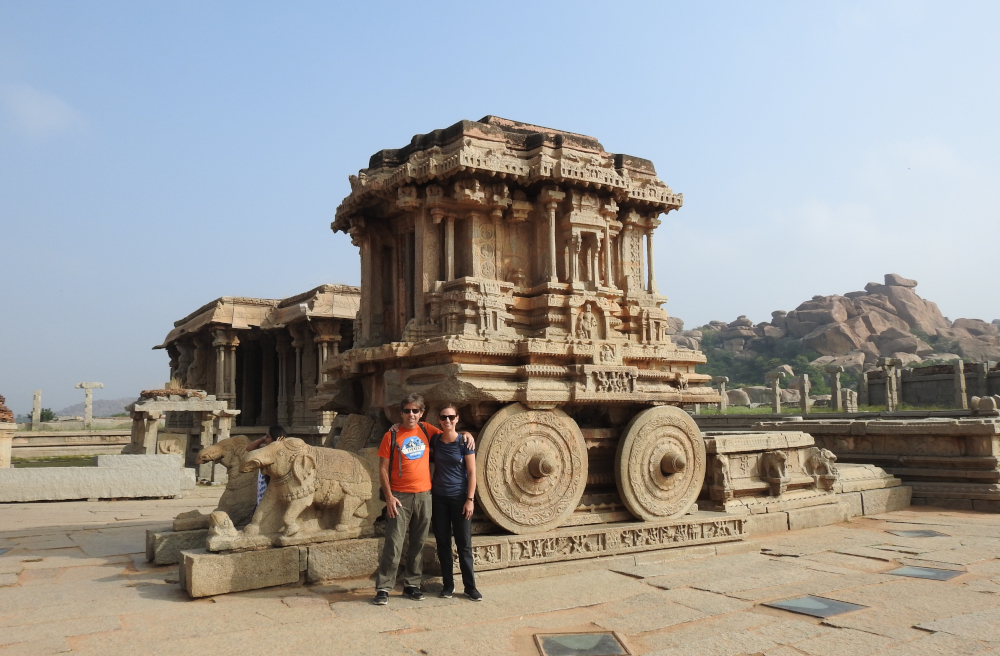

In the center of town is the Virupaksha temple, where there is a real elephant named Lakshmi living inside. I felt quite bad for the elephant being cooped up in a temple all day while endless people have their photo taken with her. We also saw many monkeys, cows, and street dogs inside the temple. Apparently all are welcome.
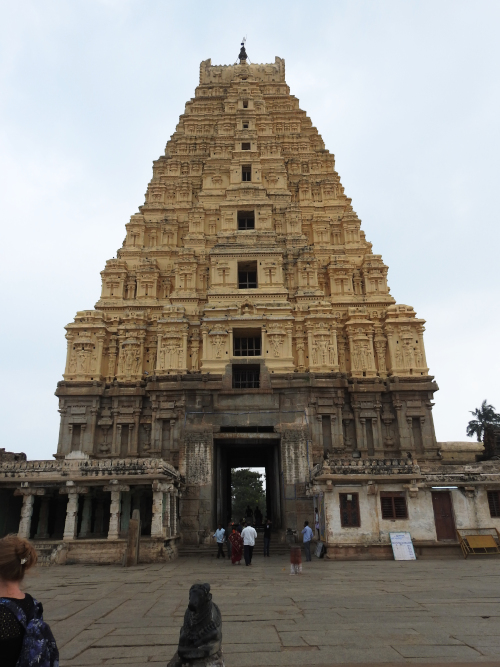
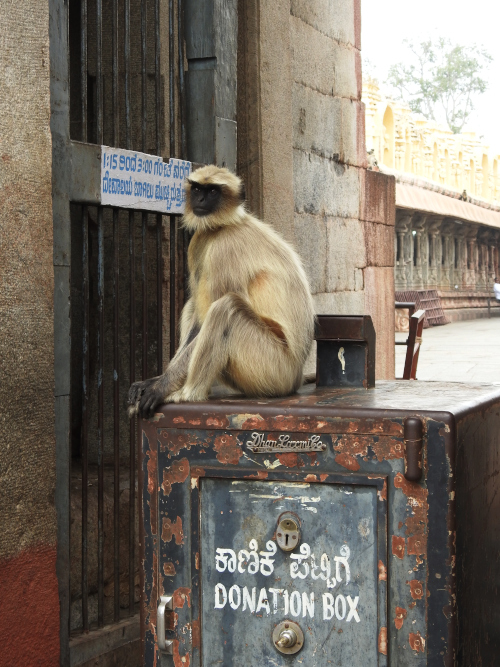
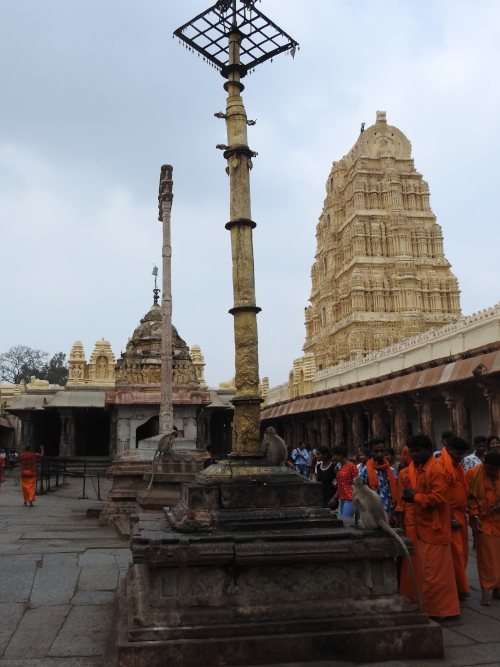
The landscape in Hampi is a bit surreal with giant mountains of boulders interspersed with palm trees and rice fields. I was not familiar with Hampi before going there and the incredible natural beauty of the area was a wonderful surprise. We visited Sanapur Lake where many young people were hanging out on the rocks and cliff jumping, even though there are signs that say there are crocodiles in the water. Hampi is also a popular hangout spot for hippie types. There is even an area named Hippie Island which is where many backpackers stay in cute little huts with hammocks.
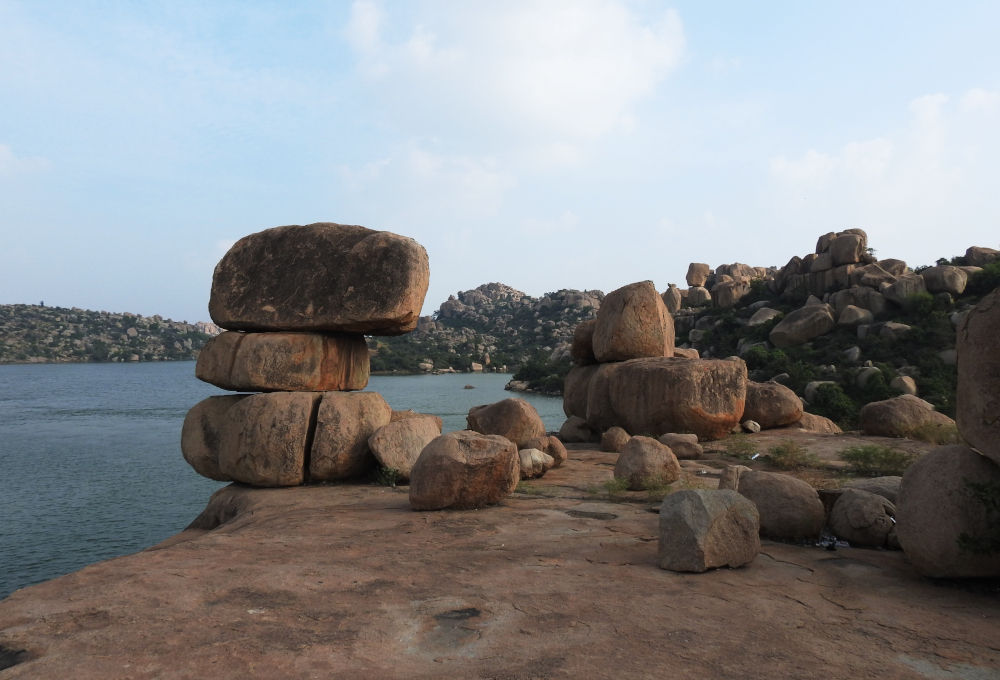
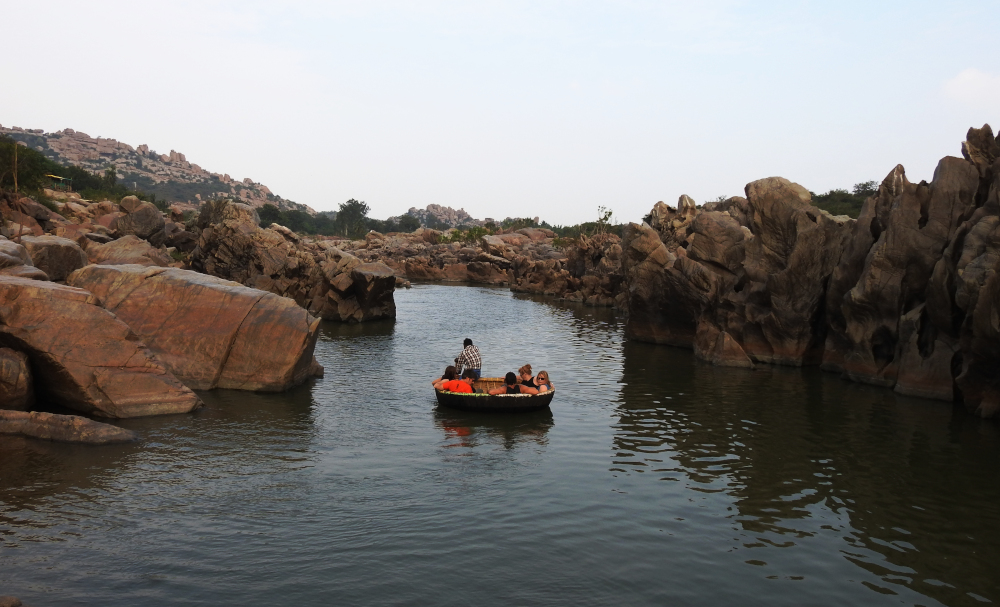
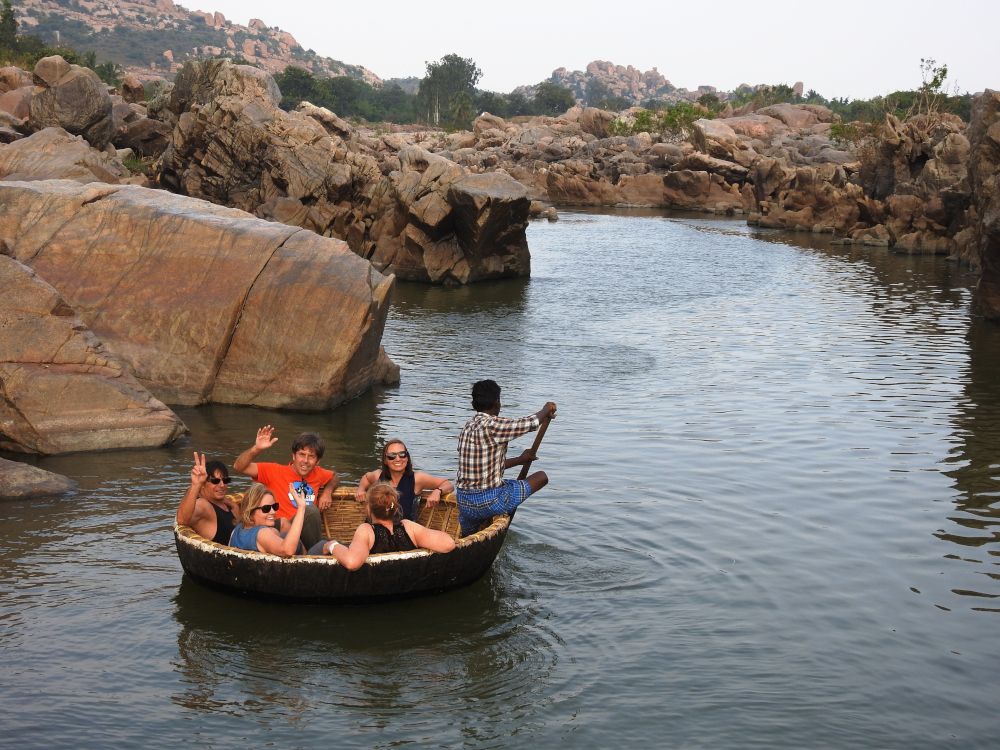
We also went for a short float with a local man who paddled us around in his round basket boat for a small fee. In the late afternoon we climbed the 800 or so steps to reach the Monkey Temple on Anjaneya Hill, where we sat for about an hour and took in the gorgeous views and sunset. This temple is said to be the birthplace of Lord Hanuman, also known as the Monkey Warrior God.
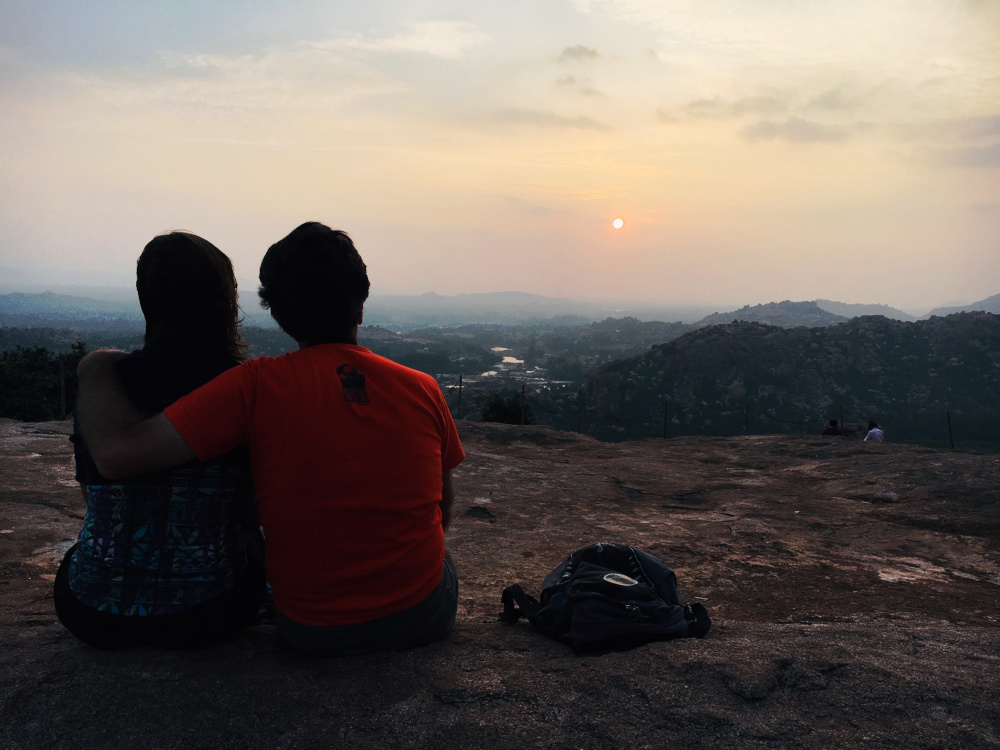
After our second day in Hampi we had to prepare to take our final overnight train of the trip to Goa, where our tour will officially come to an end. With only one week to spend in Goa after our tour ends, our trip is winding down and we are getting quite excited about heading home.

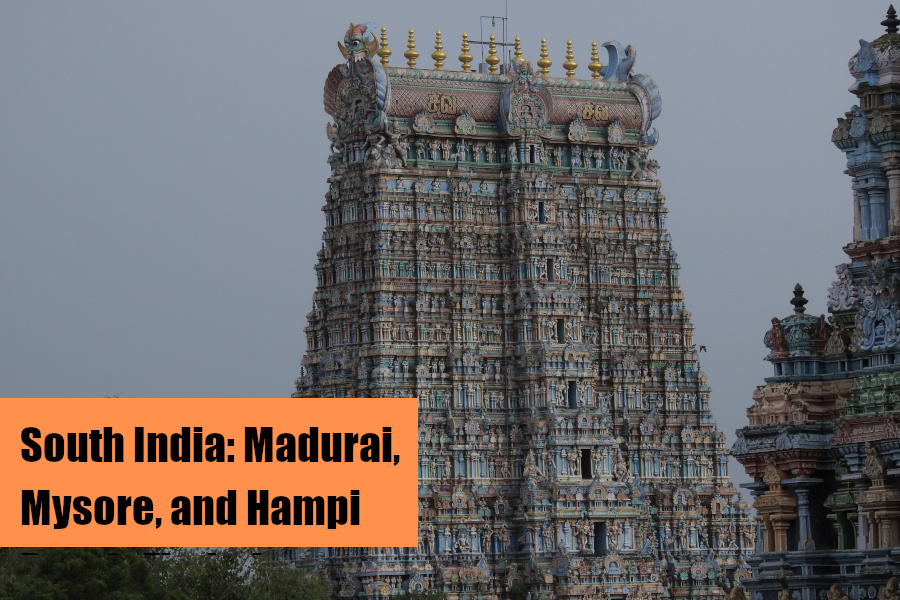
You are likely to sing with nightingale in conservation areas and dance with peacock in national parks. Stephie Dennie Euh